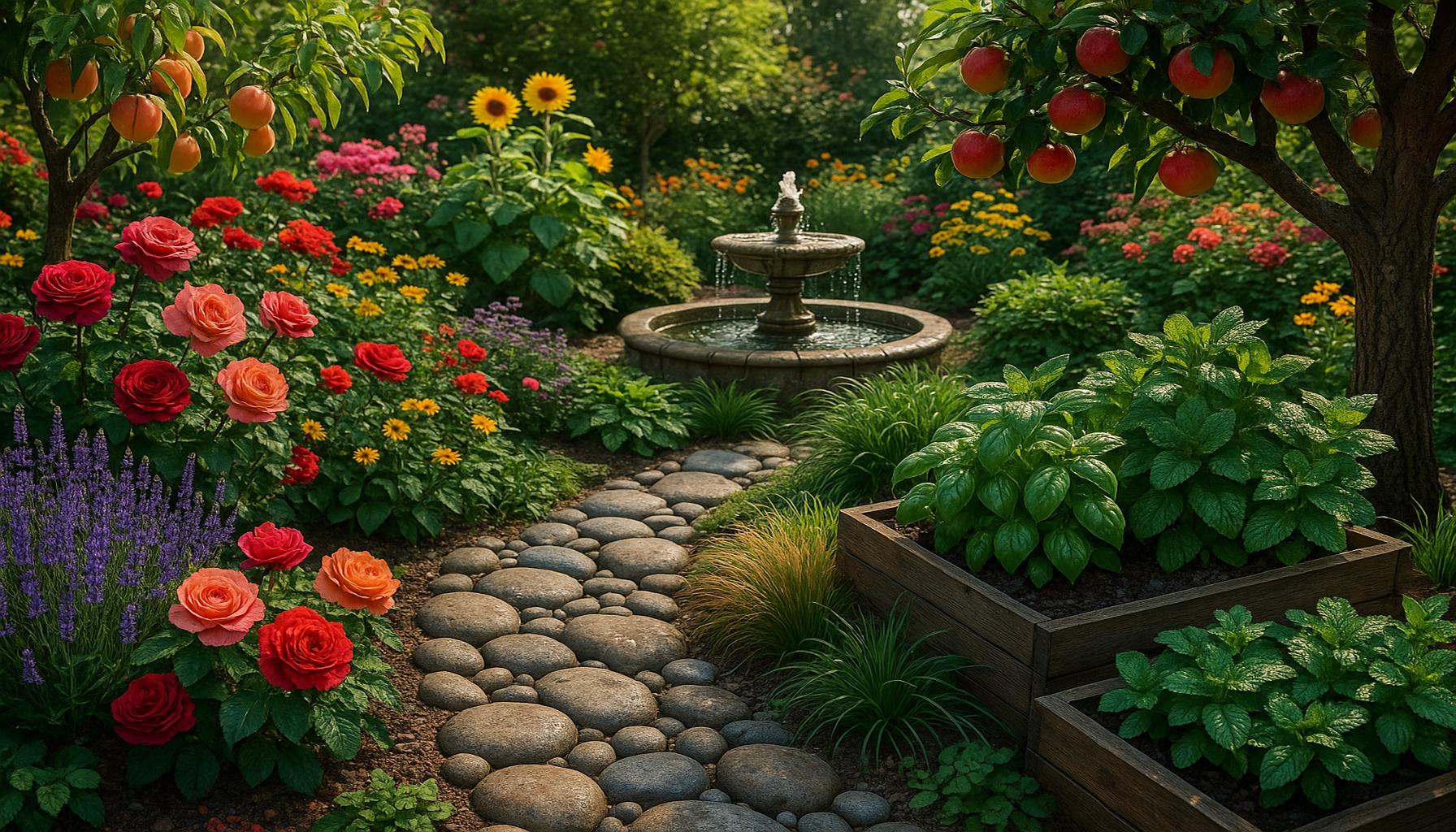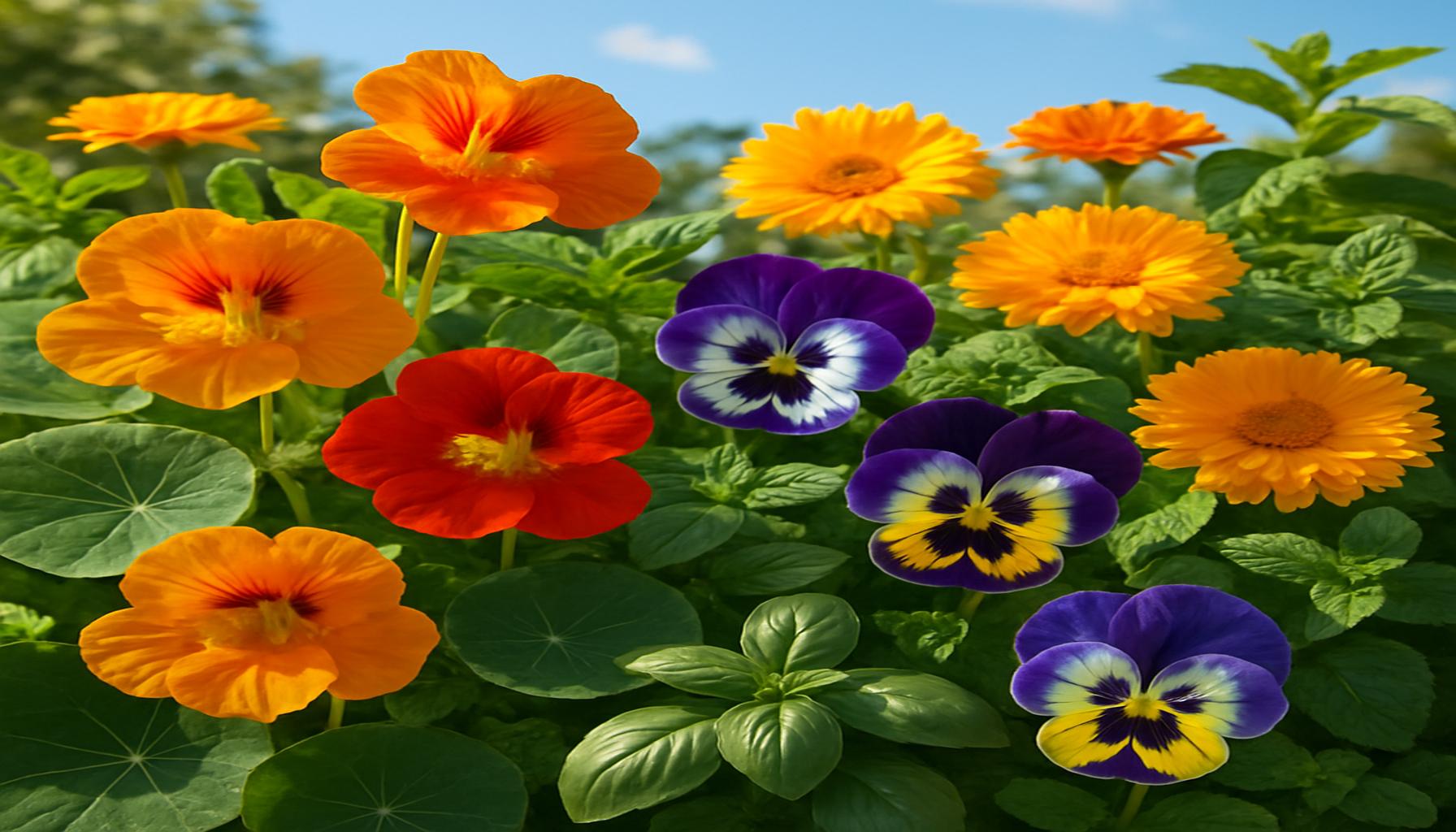Sensory Gardens: Creating Spaces that Stimulate the Five Senses

The Benefits and Design Elements of Sensory Gardens
Sensory gardens are innovative spaces that engage and stimulate the five senses: sight, sound, touch, taste, and smell. These gardens provide a multi-sensory experience, enhancing both physical and emotional well-being. The intentional design of sensory gardens can foster relaxation, promote mindfulness, and offer therapeutic benefits, making them particularly valuable for diverse populations, including children, the elderly, and individuals with sensory processing disorders.
Design Elements That Engage the Senses
Creating a sensory garden involves various design elements that focus on immersive interactions with nature. Here are some key aspects:
- Vibrant colors: The use of bright flowers, leafy greens, and colorful foliage captures the eye and can influence mood. Flowers like sunflowers, marigolds, and lavender not only attract attention but also provide beauty throughout different seasons.
- Textured surfaces: Incorporating various plant textures invites touch. For instance, the rough bark of trees contrasts with the soft petals of roses, encouraging visitors to explore the different sensations their fingers can experience.
- Fragrant plants: Smelling is a significant part of the sensory experience. Plants such as rosemary, mint, and jasmine add not only beauty but also delightful scents that can evoke memories and emotions.
- Sounds of nature: A well-planned sensory garden prioritizes auditory experiences. The gentle rustling of leaves, the singing of birds, and even the sound of water features like fountains or small ponds can create a serene atmosphere.
- Tasteful edibles: Integrating fruit-bearing plants, herbs, and vegetables engages the palate. For example, allowing visitors to sample fresh strawberries or mint can enhance their experience while teaching them about gardening and nutrition.
Settings for Sensory Gardens
Sensory gardens can thrive in a variety of environments, making them accessible to many. They can be found in:
- Parks: Community parks often feature sensory gardens as a way to promote social interaction and encourage families to spend time in nature.
- Schools: Many educational institutions employ sensory gardens to create enriching outdoor classrooms where children can connect with nature while learning about biology and the environment.
- Nursing homes: For seniors, sensory gardens offer a therapeutic space that can help stimulate memories and provide comfort through familiar smells and sights.
- Backyards: Home gardeners can create their own sensory spaces using native plants and edible herbs, allowing families to learn about gardening while fostering a connection with nature.
Whether you’re an avid gardener or just starting out, sensory gardens present an opportunity for unique exploration and learning. They promote mindfulness, creativity, and a bond with the environment, making them beneficial for individuals of all ages. As you venture into the world of sensory gardens, consider the incredible potential these spaces hold to nurture not just plants, but also the human spirit.
DISCOVER MORE: Click here to learn how gardening can boost your well-being
The Therapeutic Impact of Sensory Gardens
Sensory gardens are not just aesthetically pleasing; they are powerful tools for enhancing mental and physical health. These gardens are designed with the specific intent of engaging the five senses, which can lead to significant therapeutic effects. Research indicates that exposure to nature has the potential to reduce stress, alleviate symptoms of anxiety and depression, and even improve cognitive function. By thoughtfully incorporating elements that cater to each sense, sensory gardens can create a safe haven for relaxation and healing.
Benefits of Engaging the Five Senses
Different sensory elements in these gardens serve unique purposes, contributing to an overall sense of well-being. Here are the core benefits associated with each sense:
- Sight: Eye-catching colors and diverse plant life stimulate visual interest and enhance mood. The visual appeal of flowers blooming in various shapes and shades can evoke happiness and wonder.
- Sound: Sounds found in a sensory garden, like wind rustling through leaves, chirping birds, or bubbling water features, can lower stress levels and improve concentration. Such sounds help drown out the noise of daily life, promoting mindfulness.
- Touch: The variety of textures—from the velvety softness of lamb’s ears to the smooth surfaces of river stones—invites hands-on exploration. Touching different plants can foster a connection to nature, making the experience more immersive.
- Smell: Olfactory engagement is profound in sensory gardens. Fragrant plants can trigger powerful memories and emotions, acting as a form of aromatherapy that rejuvenates the spirit. The aroma of mint or the sweetness of honeysuckle can transport visitors to cherished moments in their past.
- Taste: Sensory gardens often include edible plants that allow visitors to engage their sense of taste. Harvesting and enjoying fresh herbs or fruits enhances the overall experience while promoting healthy eating habits.
Community Integration and Educational Purposes
The design of sensory gardens also plays a crucial role in fostering community involvement and educational opportunities. These gardens can serve as outdoor classrooms where students learn about environmental science, biology, and the intricate relationships between plants and their ecosystems. By engaging children in hands-on activities such as planting, harvesting, or caring for the garden, educators can cultivate a deep appreciation for nature and responsibility toward the environment.
Moreover, sensory gardens are pivotal in community parks and therapy centers, providing an inclusive space where people of all ages and abilities can engage with nature. Such integration encourages social interactions, facilitates bonding experiences among families, and fosters a sense of belonging in a community setting.
Ultimately, the thoughtful design of sensory gardens extends far beyond visual delight; it has the potential to significantly elevate mental health, promote community togetherness, and provide a space for intimate learning. By skillfully engaging the senses, these gardens cultivate a sanctuary for exploration, creativity, and healing, proving that nature holds remarkable power in nurturing the human spirit.
| Category | Key Features |
|---|---|
| Visual Appeal | Utilizes vibrant colors and diverse plant species |
| Aromatherapy | Incorporates fragrant flowers and herbs to stimulate smell |
| Tactile Experiences | Features various textures from leaves, stones, and water |
| Sound Elements | Includes wind chimes and flowing water for soothing sounds |
| Tasteful Additions | Utilizes edible plants and fruit trees to engage taste |
Creating a sensory garden is not just about aesthetics; it is about crafting an environment that fully engages the senses. Such gardens often incorporate visually stimulating elements, with vibrant flower beds and architecturally designed pathways that invite exploration. The lush layering of foliage can create an enchanting backdrop, maintaining interest throughout different seasons.The introduction of scents can further enhance this experience, as fragrant plants like lavender and rosemary not only beautify the landscape but also relax the mind. This multi-faceted approach opens avenues for learning and engagement for all ages, making sensory gardens ideal for educational settings and private homes alike.Engagement doesn’t stop at sight and smell; textures play a pivotal role in a sensory garden experience. Imagine walking through a pathway surrounded by smooth stones, rough tree bark, and soft petals all in a single stroll. Beyond the tangible, sound also contributes to this multi-sensory experience. The gentle rustling of leaves or the melodic chime of bells can transport a visitor into a state of tranquility.Moreover, incorporating edible plant species such as berry bushes or herb gardens not only tempers taste preferences but also encourages interaction. With this rich tapestry of sensory experiences, from sight to sound to taste, sensory gardens create inviting spaces for relaxation and learning, inviting visitors to connect deeply with nature and themselves.
DIVE DEEPER: Click here to discover effective crafting techniques for stress relief
Designing Inclusive Sensory Experiences
To maximize the benefits of sensory gardens, thoughtful design is essential. The construction of these gardens requires an understanding of how various elements can harmoniously work together to stimulate the senses. A well-planned sensory garden should aim to be not only visually captivating but also accessible to individuals of different ages and capabilities. This inclusivity ensures that everyone can enjoy the multifaceted experiences offered by these spaces.
Incorporating Elements for All Abilities
Accessibility in sensory gardens is paramount. Designers can integrate features such as raised beds for easy gardening access, wide pathways to accommodate wheelchairs, and sensory-friendly materials for tactile exploration. For example, pathways made from textured materials can enhance mobility while providing tactile stimulation. Incorporating ramps and handrails also allows individuals with mobility challenges to navigate the garden freely.
Moreover, when selecting plants, it is beneficial to include native species that are well-suited to the local environment. These plants can offer educational opportunities regarding local ecology and biodiversity while providing ecological benefits like attracting beneficial insects. Gardeners can also incorporate plants with diverse blooming seasons to create a sensory experience throughout the year. Seasonal shifts provide visual variety, frequent change in scents, and different plant textures, enhancing engagement throughout different times of the year.
The Role of Technology in Sensory Gardens
As technology advances, innovative tools can enrich the sensory garden experience. For instance, augmented reality (AR) apps can provide digital guides that explain flora and fauna, detailing their significance and history. Some sensory gardens have utilized sound bowls or music stations that create immersive auditory experiences, blending nature with technology. These modern touches can educate and entertain, ensuring the engagement of tech-savvy generations.
Additionally, many sensory gardens have successfully integrated community-generated art. Murals, sculptures, and interactive installations can stimulate the visual sense while serving as a medium for local artists to share their work. This unison of art and nature invites a broader audience, fostering community involvement and personal storytelling through the art present in the space.
Engaging the Community Through Workshops and Events
Beyond their therapeutic benefits, sensory gardens can host a wide range of workshops and events aimed at community engagement. From yoga sessions surrounded by soothing fragrances to gardening workshops that teach skills while connecting to nature, these activities can enrich the community experience. Local schools can organize field trips to sensory gardens, incorporating lessons on science, ecology, and even nutrition that align with the garden’s offerings.
Fundraising events, such as farm-to-table dinners featuring ingredients grown within the garden, offer yet another way of integrating community and sensory experiences. Such events encourage local support for the garden, build a sense of ownership, and cultivate relationships among community members. This synergy enhances social connectivity and reinforces the value of sensory gardens as communal spaces for learning, healing, and enjoying nature’s bounties.
Ultimately, the essence of sensory gardens lies not only in the engagement of the five senses but also in fostering community, inclusivity, and education. By considering all aspects, from access to technology integration, we can create environments that resonate with the heart and mind, proving that sensory gardens are indeed places of harmony and healing.
DISCOVER MORE: Click here to dive into different literary genres
Final Thoughts on Sensory Gardens
In an increasingly fast-paced world, sensory gardens emerge as sanctuaries that reconnect individuals with nature and enrich the human experience by engaging the five senses. The thoughtful incorporation of varied plant species, interactive art, and modern technology creates vibrant spaces where sight, sound, touch, taste, and smell coexist in perfect harmony. As we’ve explored, these gardens transcend mere aesthetics; they promote inclusivity by catering to individuals of all abilities, forging a sense of community through shared experiences.
Furthermore, sensory gardens serve as powerful tools for education, offering opportunities to learn about local ecosystems, biodiversity, and sustainable practices. By hosting workshops and events, these spaces cultivate deeper connections among community members and enhance social bonds. As cities and towns look to revitalize public spaces, integrating sensory gardens can not only beautify environments but also contribute positively to mental and emotional well-being.
As we move towards a future that prioritizes wellness and inclusivity, let’s champion the development of sensory gardens. They hold the potential to inspire individuals, foster community spirit, and heal through the simple yet profound act of engaging with nature. Whether you are an urban planner, educator, or simply an enthusiast, consider advocating for or creating a sensory garden to unlock the myriad benefits these spaces can offer. The journey toward a more inclusive, harmonious, and engaging community begins in the rejuvenating embrace of nature.


